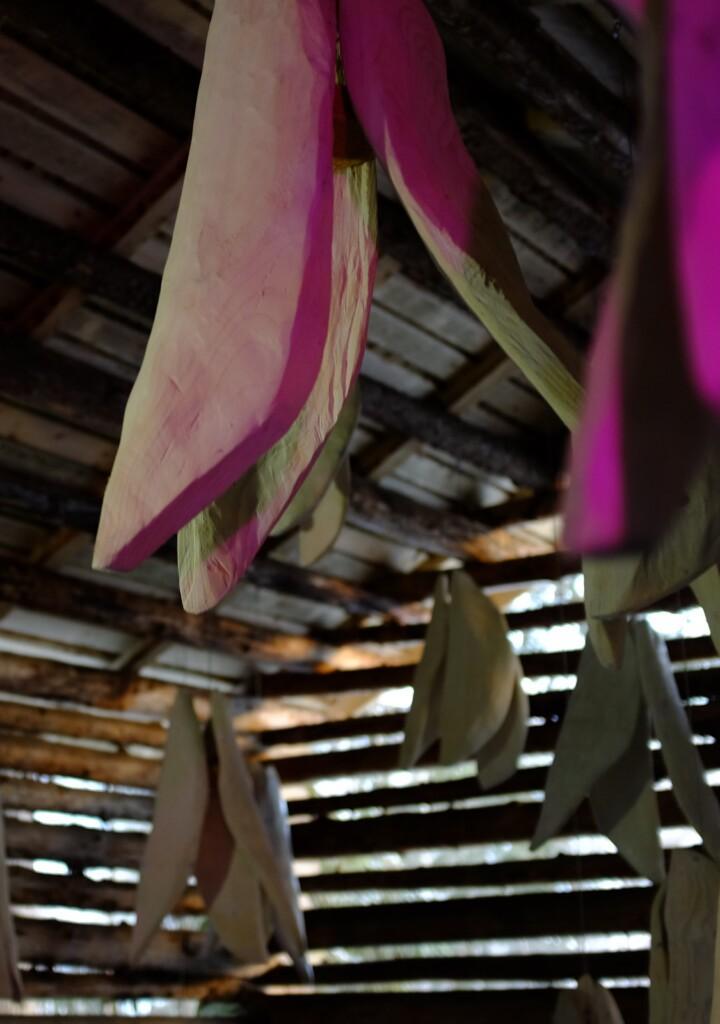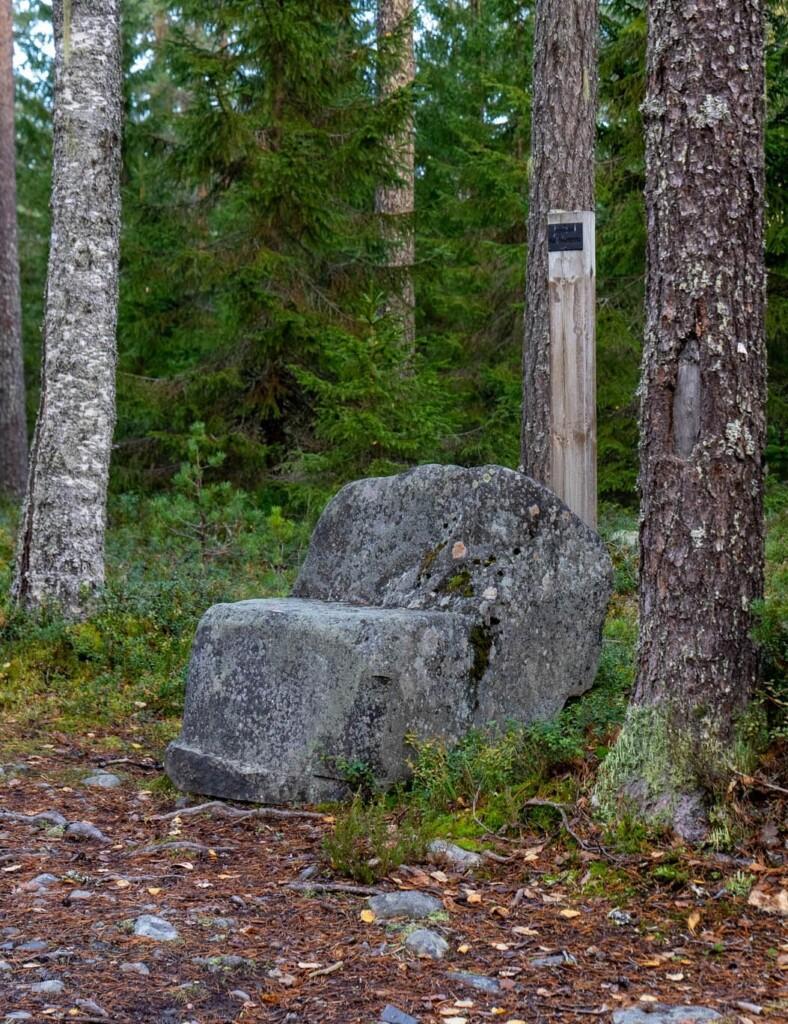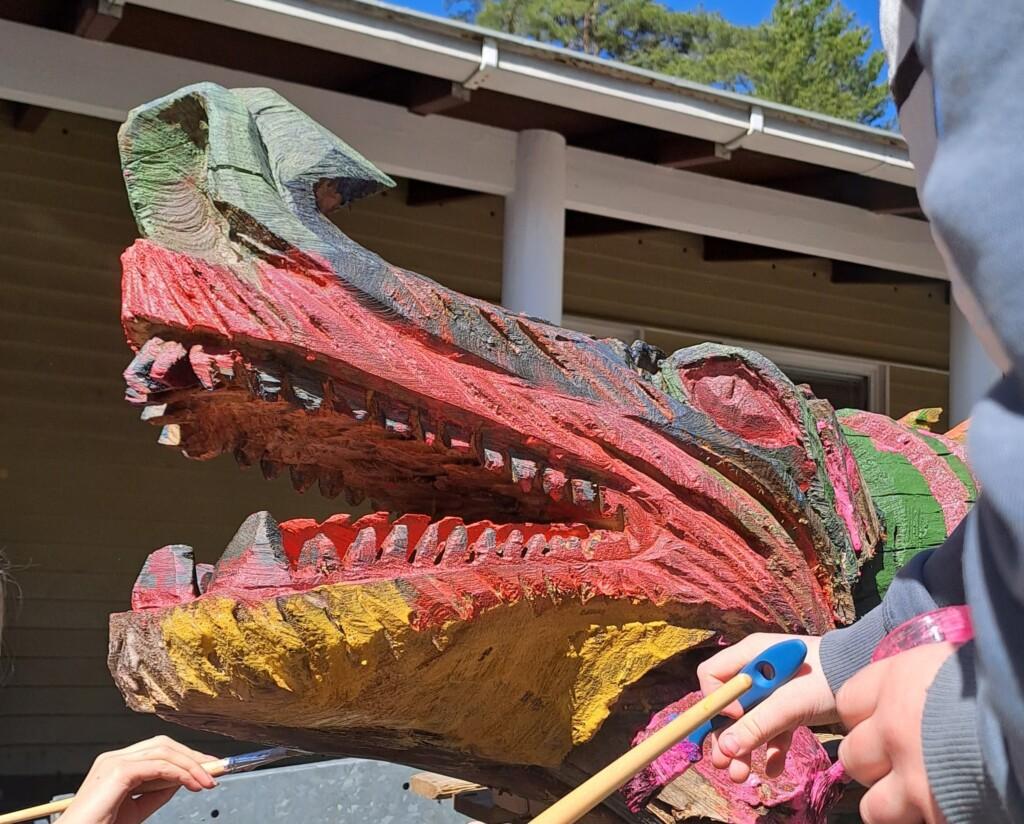Sanginkontu art trail in the riverside forests – a cultural route

Rivers flow in time and space. They connect villages to the world and big cities to the countryside. People and stories come and go, moving from one place to another.
A network of artworks, Sanginkontu art trail, is forming on the banks of the Oulujoki and Sanginjoki rivers and in the nearby forests. You will soon be able to find works by environmental artists in this enchanting environment that reverberates the area’s cultural heritage, its memories and stories intertwined with the artists’ interpretations. Each work of art is designed with respect for the area’s spirit, nature, history and people. Villagers were also involved in the implementation of the works.
The works are part of the Oulu2026 cultural programme. They are designed to have a ten-year life cycle, so they will remain in place to delight visitors to the area even after the European Capital of Culture events. The dedicated members of the Sanginsuu-Lapinkangas-Sanginjoki Village Association will maintain the works.
Introductions to the artworks will be published on this page as they are completed. The works will be located in the following three villages: Sanginsuu, Lapinkangas, Sanginjoki.
The artworks are by François Blosseville & Johanna Häiväoja, Pia Hentunen, Felicia Honkasalo, Kati Leinonen & Tuomas Mujunen, Macu Makkonen & Jesse Kitinoja, Eero Markuksela, Kai Ruohonen, Jussi Ruusulampi and Satu Suvanto.
Introduction to the artworks of Sanginkontu

Huoma
The hay barn was an outbuilding in the forest ranger’s farmyard and had an important function back in the day: to protect food for people and animals. Now fairy-tale snowflowers and root-like shapes rain down from the ceiling, offering a glimpse into the thoughts of villagers and friends of the Sanginjoki forest on the surrounding nature and the traditions of the forest rangers.
‘Huoma‘ refers to protection, safety and noticing, all themes that came up in the artist’s conversations with participants to the workshops held during the creation process. The texts were collected from villagers and friends of the Sanginjoki forest through art workshops held in 2024.
Huoma, an environmental work, Satu Suvanto, old barn, wood, concrete, ceramics (2024). The work is part of the Sanginkontu art trail.

Seating stone
The Seating stone, a boulder shaped by the Ice Age, has been an important resting and meeting place in Sanginjoki for generations. Children liked to take a break here on their way to and from school, and those on the way to bring cows home from the nearby meadows could stop to rest on it. Declarations of love have also been made on the Seating stone over the decades. Satu Pietilä collected memories of the Seating stone on video, and Aimo Laitinen carved the log stools for people to sit and listen to the stories.
Seating stone, Satu Pietilä, documentary video, duration 7 minutes. Log stools, Aimo Laitinen, 2024

River dragon
This ‘ancient relic’ was found in the forest and named River dragon by the pupils at Sanginsuu School. The children brought the dragon to life through colours and stories in a workshop led by community artist Pia Hentunen. They worked on the wooden sculpture, which was carved with a chainsaw by Aimo Laitinen, who lives in the village.
River dragon, Sanginsuu School pupils, artist Pia Hentunen, 2023. Wooden sculpture, Aimo Laitinen, 2022.
